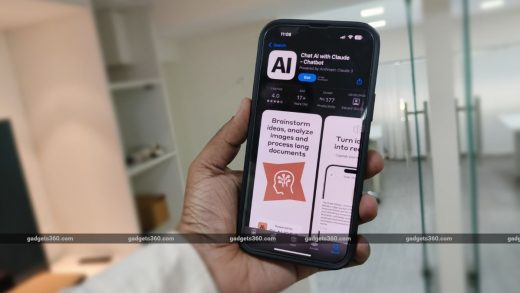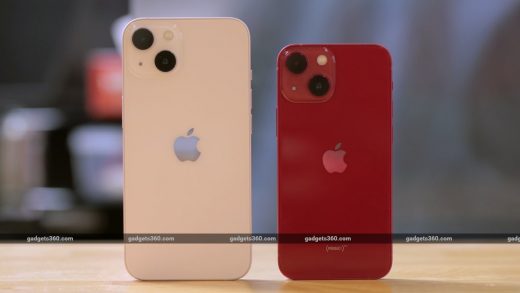
Quest Pro is slated to launch this month, inaugurating Meta’s “prosumer / industrial-grade mixed reality product line”.
Meta still refers to Quest Pro as Project Cambria – the codename given when it was announced at Connect 2021. Zuckerberg used the name ‘Quest Pro’ in an interview though, and it’s present in the Meta Quest iOS app. It was effectively confirmed last month when a hotel worker found an engineering sample with retail packaging.
Here’s everything Meta confirmed, everything leaked, and what a prominent supply chain analyst claimed about the resolution & screen type:
Color Passthrough
Quest Pro’s flagship new feature is color passthrough for mixed reality.
Quest 2 uses its four tracking cameras for passthrough. Its passthrough mode was originally only intended for Guardian setup, since the cameras are low resolution and don’t output color.
Meta calls Quest Pro’s passthrough “high definition”. Mark Zuckerberg said the sensors have three times the resolution of Quest 2.
Pancake Lenses
Like the Pico 4 series, Quest Pro uses pancake lenses.
Quest 2, Vive Focus 3, PlayStation VR2, and PC VR headsets like Valve Index use refractive lenses (fresnel or aspheric).

Pancake lenses support smaller panels at a closer distance, and thus a slimmer and lighter visor.
The downside of pancake lenses is low optical efficiency, so the display needs to be much brighter to achieve the same output brightness – requiring a larger heavier battery.
Eye Tracking & Face Tracking
Quest Pro will include eye tracking and face tracking, so your real-time gaze and facial expression are mapped to your avatar.
![]()
What hasn’t been revealed yet is whether the eye tracking supports foveated rendering. Foveated rendering is a technique where only the small region of the display you’re currently looking at is rendered in full resolution, thus freeing up performance since the rest is lower resolution. That extra performance can be used to improve the graphical fidelity or for higher perceived render resolution.
Depth Sensor
Quest Pro includes an infrared pattern projector for active depth sensing.
Meta hasn’t yet said much about what this will be used for, but Zuckerberg described it as “more optimized towards hands” so expect Quest Pro to have more reliable hand tracking.
Our Speculation: To use mixed reality on Quest 2 you manually mark out your walls and furniture, but this is an arduous process with imperfect results. Quest Pro could – either at launch or with a software update – scan your room automatically, as is already possible on existing devices with depth sensors like HoloLens 2, iPhone Pro, and iPad Pro.
Quest Apps
Meta has confirmed Quest Pro will access the same Meta Quest Store and run the same apps & games as Quest 2. If you’re an existing Quest owner you won’t have to re-buy content.
Expensive Price
Meta told us the headset will be priced “significantly” above $800. There’s a lot of tech going into this product – the focus is clearly not on affordability.
For comparison, HTC’s Vive Focus 3 with the official eye tracking and face tracking addons comes to $1647.
Target Audience
Zuckerberg told investors the headset is “more focused on work use cases and eventually replacing your laptop”.
A leaked internal memo said it “inaugurates our prosumer / industrial-grade mixed reality product line”. The reference to prosumers seemingly confirms it will be sold to individuals, not just businesses.
Release Month
Mark Zuckerberg told Joe Rogan the company’s next headset will release in October, almost certainly referring to Quest Pro.
Connect, Meta’s annual AR/VR conference, is scheduled for October 11th.
Last year just days before Project Cambria was announced by Meta, YouTuber Basti564 discovered tutorial videos in the Quest firmware. These videos revealed the design, self-tracking controllers, and a charging pad.

By November, just weeks after the dark teaser video, Basti had found textures of Cambria and its controllers, and formed them into a 3D model.
Last month a hotel worker found an engineering sample with retail packaging. He recorded himself unboxing it and posted the video on Facebook, along with images.

The images & video confirms earlier leaks including the product name.
The Name
Meta still refers to Quest Pro as Project Cambria – the codename given when it was announced at Connect 2021. The product name is visible on the packaging.
Zuckerberg actually used the name ‘Quest Pro’ in an interview though, and it’s present in the code of the Meta Quest iOS app. The headset even showed up accessing WebXR content.
The Design
The tutorials found by Basti just before Project Cambria’s announcement gave us the first look at the headset’s design. The 3D model he made gave an even more detailed look.
In April YouTuber Bradley Lynch claimed to have seen real images of Quest Pro and collaborated with product designer Marcus Kane to produce detailed renders. The renders show the headset with five external cameras – three on the front and one on each side.

The camera configuration in these renders matches the real headset seen in the hotel worker’s unboxing.
RAM & Storage
Import logs found by SadlyItsBradley, Reggy04, and Samulia reference a shipment sent to Meta in March of “SEACLIFFBCM” with “256GB / 12GB” in the description – Seacliff being the codename for the Quest Pro headset.
Given Quest 2 is sold in 128GB and 256GB models, 256GB almost certainly the storage size and 12GB the amount of RAM.
Quest 2 has 6GB of RAM, so 12GB might enable true multitasking.
Self-Tracking Controllers
Those tutorial videos found by Basti showed controllers with onboard cameras instead of a tracking ring, presumably used for independent inside-out tracking.
Meta’s original teaser video also showed controllers with no tracking ring, but it was too dark to make out cameras.

The hotel worker’s unboxing video clearly showed the controllers, including the positions of the three cameras.
Charging Dock
One of the videos found by Basti showed a charging dock for the controllers with pogo pins for wireless charging.
A third set of pogo pins suggests the headset also charges from this dock. The headset & controllers could be ready to go whenever you need them, and the constant access to power means game & app updates may download in the background.
In April prominent supply chain analyst Ming-Chi Kuo claimed it will have dual 2.48″ 2160×2160 Mini-LED LCD panels.
Mini-LED isn’t a completely new display technology like the name might suggest – it’s just an advanced form of LCD backlighting. While traditional small LCD panels use a single backlight behind the entire display, Mini-LED instead uses hundreds or even thousands of tiny LED elements to deliver contrast levels close to OLED – though usually with the tradeoff of some blooming. Mini LED is already present in the high-end PC headset Varjo Aero, and Pimax plans to use it in its standalone headsets too.

Quest 2 uses a single 3664×1920 regular LCD panel. Headsets with a single panel can’t utilize all of the pixels because there’s an unused gap between the lenses. And since Quest 2 has lens separation adjustment, Meta had to leave even more unused space. That means the actual resolution provided to each eye is notably less than 1832×1920.
If Kuo’s information is correct Quest Pro should deliver at least 35% more pixels to each eye and offer superior contrast.



